The Concept of Muskeljudentum
by Norman Berdichevsky (April 2023)

The David Berger National Memorial, David E. Davis, Cleveland, Ohio
The recent World Cup of Football and the history of the Olympic Games since 1936 (with their worldwide media coverage) are examples of how the high ideals of sportsmanship and the quest for athletic achievement have both been prostituted to the Golden Calf of jingoism, chauvinism, antisemitism, hero worship, mass hysteria, and sordid politics. These intense national rivalries reached a climax in the 1972 Munich Summer Olympic Games with the politically driven assassination of eleven Israeli athletes by the Black September terrorist movement disregarding every convention of civilization, and made even more grotesque by the refusal of many athletes from Moslem countries refusing to attend the memorial services.
Prior to the high crimes of kidnapping, hostage taking, and murder, the Olympic Games were the site of politically-motivated demonstrations which violated Rule 50 of the Olympic Charter (which already prohibited athletes from protesting at the Games), but did not give enough specific guidelines to avoid displaying political messaging in signs or armbands, disrupting medal ceremonies, making political hand gestures, or “taking the knee,” a technique now common in professional football. The most recent World Cup matches in Qatar represented the worst aspects of corruption on a world scale—chauvinism in which tens of millions of spectators invested the players on the field with a national mission designed to elevate their own egos.
I have an interest in the sport and know something about the game of football (known in the United States as Soccer) since I was a fan at a time in the 1950s when the sport held the interest of very few American boys. I fondly recall my Russian-born father’s love of the game that he had followed in Europe and throughout the years we lived in the Bronx, home of several of the teams that competed in the semi-pro American Soccer League (ASL). The teams’ names represented the overwhelmingly ethnic origin of the players and fans: New York HaKoah, Newark Portuguese, Brooklyn Italians, Philadelphia Ukrainians, New Brunswick Hungarian-Americans, Newark Ukrainians, Warsaw Falcons, Brooklyn Hispano, and Kearney Celtic.
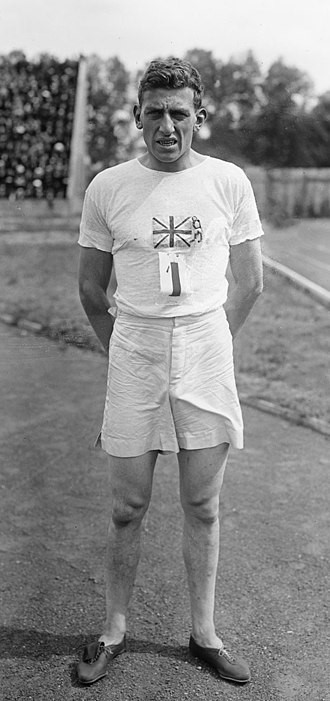
Even the team called the “New York Americans” was made up almost primarily of foreign-born Jews. Yes, there was an aspect of pride for fans back then who were proud of their sons, fathers, cousins and uncles displaced from Europe or Latin America and first-generation immigrants to the U.S and who played for the love of the game and to demonstrate their ethnic pride but it was light-years away from the superstar status and megabuck professional game and the World Cup.
To put it objectively, this was a very low-key league and enjoyed recognition only within the New England-New York-New Jersey-Philadelphia-Baltimore area until the early 1970s when soccer enjoyed a sudden expansion of national interest made possible by attracting super stars like Pele. Local Crowds usually numbered from a few hundred to several thousand and I spent many afternoons watching my father relive his youth at the local fields, nearby Sterling Oval and the more distant Zerega Oval (both in the Bronx).
Although many Jews have excelled as athletes and won many Olympic gold medals in athletics, gymnastics, swimming, boxing, wrestling and fencing, Jewish participation in such events was held in low regard by both the established Jewish community leaders and by the fans and coaches of professional sports clubs and teams. This fact was dramatized in the highly successful Oscar winning film “Chariots of Fire,” featuring the success of the 1924 British Olympic track team. It is based on the true story of two British athletes in the 1924 Olympics: Eric Liddell, a devout Scottish Christian who runs for the glory of God, and Harold Abrahams, an English Jew who runs to overcome prejudice. The scholarly elite of Cambridge college deans, regarded Abrahams as an upstart Jew who was not gentlemanly because he had sought advice from a professional coach. Abrahams knows that it is simply a cover for antisemitic and class-based prejudice. He competes in the 100-meter race and wins, demolishing a strongly held antisemitic prejudice among many of the Cambridge academic elite.
No professional football club boasting a Jewish identity anywhere has equaled the achievements of the Vienna HaKoah club. At home in the Melrose-Morrisania section of the Bronx, there was a local New York club of largely Jewish players bearing the same name in the American Soccer League, and they won three league championships in 1957-59, enabling me to bolster my ethnic ego.
The HaKoah-Vienna club was closed by the Nazis in 1938 following the Anschluss, was re-formed in 1945, though its football team was finally disbanded in 1949. It was founded in 1909 by a pair of Austrian Zionists, cabaret librettist Fritz “Beda” Löhner, and dentist Ignaz Herman Körner. Both deeply influenced by Max Nordau’s doctrine of “Muscular Judaism” (German: Muskeljudentum), they named the club “HaKoah” (Hebrew: הכח), meaning “the strength” or “the power” in Hebrew.
Jewish excellence in many intellectual fields enjoys worldwide renown but one unintended consequence of these achievements, symbolized by numerous Noble prizes, has been to diminish and obscure similar Jewish preeminence in numerous athletic events and team sports, similarly out of all proportion to the Jewish populations of the countries in which these athletes were chosen to represent in international competition.
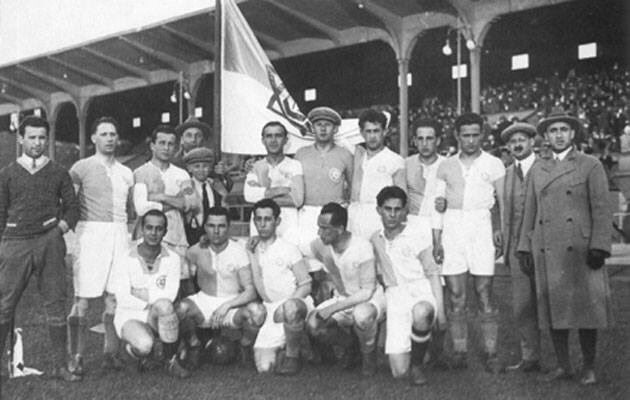
In its first year, the club’s athletes competed in fencing, football, field hockey, track & field, wrestling, and swimming. HaKoah Vienna was one of the first football teams to market themselves by travelling frequently where they would attract thousands of Jewish fans to their matches against local teams in cities such as London and New York. Support for HaKoah spread around Europe rapidly as Jews as far as Russia and the United States avidly supported HaKoah Vienna. The team took advantage of such support by setting up very successful tours and friendly matches. HaKoah attracted the attention of prominent Jewish figures including author Franz Kafka. Instead of selling souvenir jerseys and other merchandise, many supporters boasted that “HaKoah sold Zionism.”
A dramatic game of the 1924–25 season witnessed how strongly the team and its fans were motivated by Jewish pride in the face of adversity. HaKoah’s goalkeeper, Hungarian-born Alexander Fabian broke his arm. At that time, substitutions were not allowed for injuries. So, Fabian put his arm in a sling and switched positions with a forward. Seven minutes later Fabian scored the winning goal, clinching HaKoah’s league championship in the first Division of the Austrian national league! So much for the Nazi arguments of Jewish racial inferiority!
In 1926, the team conducted a highly successful tour of the United States. Their game at New York City’s Polo Grounds attracted 46,000 spectators (including my father), a record at the time. Many of the team’s players, impressed by the relative lack of anti-Semitism they found, decided to stay in the United States, accepting offers to play for American teams, including a New York HaKoah club. In preparation for their visits, they sent agents ahead of the team in order to generate buzz and attract Jewish fans. The had to face anti-Semitism during its tours and created an unconventional form of security, having the HaKoah wrestling team accompany them and act as their protection
The club maintained its own orchestra and staged balls and other social events. At its pre-war peak, the club had over 8,000 members. Dezsö Herbst, President of the Club 1928-38 was the husband of Austria’s tennis champion Liesl Herbst. He wrote in the celebratory Festschrift (brochure) on the 25th anniversary of the club in 1934:
In the days of our forefathers, we Jews have completely forgotten the old and true words in the education of our children: Mens sana in corpore sano! We only thought that the new generation should be educated, we neglected what today the whole world recognises as the only proper educational principle: to make our bodies strong.
Three days after the Anschluss, the shared club base of HaKoah Sports Club, Hakoah Tourism and Ski Club, and the Hakoah Swimming Club at the Viennese Cafe Atlashof was shut down, with the club assets and stadium seized. The official dissolution of the sports club was administered in the political department IV Ac by the Liquidation Commissioner of the Nazi party.
Dezsö Herbst did most of the official work with the Liquidation Commissioner. On 31 March 1938 the liquidator ordered the club to declare and transfer its assets. After the transfer, the final phase of the elimination of HaKoah began.
Bela Guttman was born in Budapest, Austria-Hungary, and was Jewish. He was deported by the Nazis to a Nazi slave labor camp where he was tortured but survived the Holocaust. Before the war, he played as a midfielder for MTK Hungária FC, SC Hakoah Wien, and several clubs in the United States. Guttmann also played for the Hungarian national football team, including at the 1924 Olympic Games. He coached in ten countries from 1933 to 1974, and won ten national championships and, most notably, two back-to-back European Cups with Benfica, Portugal.
In his remarkably informative and entertaining book, How Soccer Explains the World, (2005), author Franklin Foer states,
Muscular Judaism wasn’t an egghead’s pipedream, Nordau’s high toned words trickled down to the leader of Central Europe Austria’s Jewish communities. Of the fifty-two Olympic medals captured by Austria between 1896 and 1936, eighteen had been won by Jews – eleven times more than they would have won, if they had performed proportional to their population. And while much of the achievement came in individual events, especially fencing and swimming, Jews thrived in soccer too. During the 1910s and 1920s, a healthy proportion of the Hungarian national soccer team consisted of Jews. For a brief moment Jewish sporting success mimicked Jewish intellectual achievement (p.70).
Some critical observers compare spectator sports to porn. It is basking in the light of someone else’s achievements who is “having fun” but it can be more than just a pleasant diversion. What has gone wrong with both the World Cup and the Olympic Games is that many fans identify so completely with the efforts of a few individuals who are worshipped as heroes and the incarnation of their nation so that they miss out entirely on a firsthand understanding the skills and mistakes involved by never attempting to play the game as participants.
Abandonment of the Amateur Ideals
The Olympic Games degenerated from an original ideal and have gone from the ideal of pristine sport (champions and winners crowned with a wreath of olive leaves) untarnished by money and commercial endorsements with patriotism, flags, anthems, and nationalism, to a circus festival. Originally in ancient Greece, the Olympics were events of great religious significance accompanied by ritual sacrifices to Zeus. Victory was considered as a means of acquiring immortality and filled a void in pagan Greek culture with its lack of any belief in an afterlife. Indeed, sport continues to function in the same way in our increasing secular societies.
The modern Olympics that began in Athens in 1896 was founded by the French aristocrat, Pierre De Coubertin, and came at the end of a long period of peace and tranquility in Europe. De Coubertin proclaimed that “Olympism” was to be an ideal based on fair play, gentlemanly amateurism and good will among nations.
This ideal has since been dragged through the dirt. It has become a commercialized venture meshed with the vested interests of major international corporations and government manipulation. It has undergone a transformation from its original amateur basis to professionalism accompanied by large subsidies from governments eager to satisfy fans and promote patriotism with the spotlight focused on the raising of national flags and the playing of national anthems (introduced only for the first time in the 1920 games). Until those games, the ban on the participation of professional athletes was rigorously enforced leading to decisions by the Olympic Committee to deny the gold medals awarded for both the Pentathlon and Decathlon (an unmatched performance) to the great American Indian athlete Jim Thorpe, a victim in the 1912 games for having played one season in semi-professional baseball during which he received incidental and travel expenses). The past few Olympic Game have all been marred by allegations of bribery of officials to win the bidding for the chosen site, most seriously in the 2022 games in Qatar.
Until becoming open to professional athletes, the Olympic Games witnessed the sharp contrast between Western athletes forced by their committees to freely compete and qualify for selection to the games under close supervision of their amateur status while those in the East communist bloc were given preferential treatment and hidden subsidies to ensure that they would not be handicapped by work and family obligations.
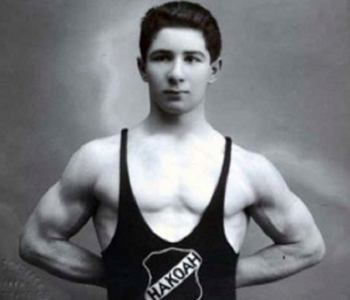
The International Olympic Committee has been led by such individuals as Avery Brundage, accused of both racism for handling the issue of apartheid in the South African delegation and his crass reaction to the bias against Jewish athletes in Berlin, 1936 and the murders at the Munich Games in 1976 while Juan Antonio Samaranch, A Spaniard who was the seventh president of the International Olympic Committee, was accused of nepotism and criticized for his ties with the Franco regime in Spain
The predominance of Jewish athletes in international sports events has been strongest in the fields of wrestling, boxing, fencing, swimming and weightlifting although their share of Olympic medals has often been glossed over or ignored. In 1936, the world’s Jewish athletes and their fellow sportsmen and women in a dozen countries faced a dilemma—to compete or not in the 1936 games held in Berlin and used by the Nazi regime as great propaganda spectacle.
In order to prevent any mishap at the games, Nazi Germany soft-pedaled its anti-Semitic platform and pretended that Jewish athletes would not be treated differently. By the time of the selection of the participants, all Jews had been excluded from German sports associations and so were not involved in the selection process although they were “allowed” to form their own associations and were left with the most inferior equipment and training facilities.
Attempts by athletes to boycott the Olympics were frowned upon by Olympic selection committees in the United States and other democracies. On May 13, 1931 (before the Nazis’ ascension to power), the International Olympic Committee awarded the 1936 Summer Olympics to Berlin and was the first real international signal that Germany had returned to the “community of nations.” A close colleague of Hitler and rabid Nazi, Hans von Tschammer und Osten, headed the Reich Sports Office that oversaw all sports bodies and clubs, including the German Olympic Committee planning the 1936 Games. He and Propaganda Minister Goebbels proclaimed “German sport has only one task: to strengthen the character of the German people, imbuing it with the fighting spirit and steadfast camaraderie necessary in the struggle for its existence.”
The German Boxing Association expelled Jewish amateur champion Eric Seelig in April 1933 who later resumed his boxing career in the United States. Helene Julie Mayer (20 December 1910 – 10 October 1953) was a German-born fencer who won the gold medal at the 1928 Olympics in Amsterdam, and the silver medal at the 1936 Olympics in Berlin. She competed for Nazi Germany in Berlin, despite having been forced to leave Germany in 1935 and resettle in the United States because she was Jewish. What other athlete has debased himself to such an extent in order for the “privilege” to compete and represent such an unworthy country?
Another Jew, Daniel Prenn, Germany’s top-ranked tennis player, was excluded by Germany’s Davis Cup Team. Gypsies were also purged from German sports.
Avery Brundage, president of the American Olympic Committee originally criticized Germany’s policies and questioned the validity of the 1936 games, but when criticism of Germany threatened to interfere with the planned games, he then went on to publicly state that Jewish athletes were being treated fairly and that the Games should go on, as planned. Brundage opposed a boycott, arguing that “politics had no place in sport’ and that “The Olympic Games belong to the athletes and not to the politicians.” When he was put in the hot seat by his policy, he responded by writing in the American Olympic Committee pamphlet, Fair Play for American Athletes, that “American athletes should not become involved in the present Jew-Nazi altercation”, (as if the two sides were wholly equivalent). As the Olympics controversy heated up in 1935, Brundage alleged the existence of a “Jewish-Communist conspiracy” to keep the United States out of the Games.
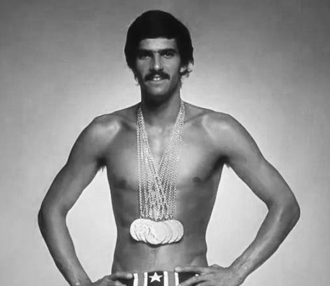
A boycott of the games was supported by Judge Jeremiah Mahoney, president of the Amateur Athletic Union, Al Smith, Governor of New York, and James Curley, Governor of Massachusetts, The Catholic journal The Commonweal (November 8, 1935) advised boycotting an Olympics that would “Set the seal of approval upon the radically anti-Christian Nazi doctrine.”
The American Jewish Congress and the Jewish Labor Committee, joined by the non-sectarian Anti-Nazi League, staged mass rallies to protest Nazi persecution of Jews and called for a boycott as early as 1933. Individual Jewish athletes made their own decisions. Milton Green, captain of the Harvard University track team, took first place in the 110-meter high hurdles in regional pre-Olympic trials and his fellow Jewish teammate, Norman Cahners, qualified for the final Olympics trials as well. Both chose to boycott the national Olympic trials.
Two other Jewish track stars, Marty Glickman (later to become a well-known sports commentator) and Sam Stoller, were denied at the last moment their places on the American 440 meter relay team and were the only participating American track athletes sent to Berlin who did not actually compete.
The same dilemma of participation or a boycott of the games faced Black athletes. Many Black journalists expressed their view that the first issue to be addressed was discrimination against their own athletes in the United States who were still excluded from professional baseball. Writers for such papers as The Philadelphia Tribune and The Chicago Defender responded however that athletic victories by Blacks would contradict and refute Nazi racial views of “Aryan” supremacy and foster a new sense of Black pride at home.
A total of 18 African-Americans—16 men and 2 women—went to Berlin, triple the number who had competed for the United States in the 1932 Los Angeles Games. All of them came from predominantly white universities, a fact that demonstrated to everyone the inferiority of training equipment and facilities at black colleges where the vast majority of African-American student athletes were educated in the 1930s. The achievements of Owens at the 1936 games in Hitler’s face, and the great American pride in the victory of boxer Joe Louis over German champion Max Schmeling paved the way for the integration of major league baseball by Jackie Robinson in 1947 in the United States after the war. It had simply become wholly anachronistic and absurd to exclude African-Americans.
The story of Denmark’s participation and the outcome of the games in Berlin deserve mention and an appreciation of how the lure of fame, fortune and “national prestige” for the athletes has been a fatal attraction. In the 1936 Olympics in Berlin, two Danish teenage girls, 15-year-old Ragnhild Hveger, won a silver medal, and 12 year old Inge Sorensen won bronze. All of Denmark hailed them as heroines and great patriots. They were greeted on their return to Denmark by a crowd of 30,000 Danes at the train station in Copenhagen. Hitler sent them a congratulatory telegram which so flattered them that both of them became eager exponents of friendly relations with the New Germany and during the war, fraternized openly with German occupation troops. The older girl even let herself be actively used in Nazi propaganda.
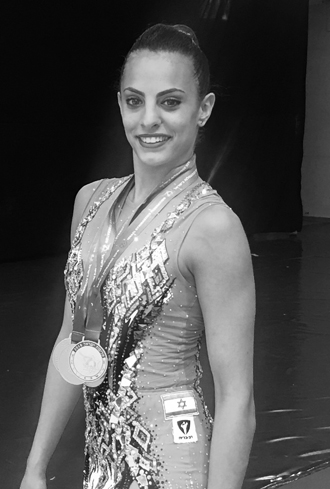
In the 1932 Olympics in Los Angeles, Denmark’s Greco-Roman wrestling champion Abraham Kurland, a member of the HaKoah Jewish Sports fraternity, won a silver medal that garnered scant attention, but all those professionals in his sport confidently predicted that he was the heavy odds-on favorite and would easily win gold in the 1936 Olympics. Kurland did not participate, however. As a Jewish athlete, he knew full well that the 1936 games violated every ethical precept that the initiators of the Olympic Games had established and hoped for in previous years.
His decision relieved the Danish Olympic Committee who were fearful that Kurland might win the Gold Medal and “embarrass Denmark.” Of course, this is what Jesse Owens did causing Hitler to leave the stadium in a huff rather than watch the Black American athlete stand on the winner’s podium and receive his gold medal. Kurland and his brother fled Denmark in 1943 to Sweden along with almost the entire Jewish community. They returned at the end of the war and continued their sports activities in many matches which they won but, by the 1948 games, Abraham Kurland, although a participant, was by then too old (age 45 by then) to have a chance.
Several brief attempts were made in 1936 by athletes in Great Britain, France, Sweden, Czechoslovakia, and the Netherlands to boycott the Berlin games. German Socialists and Communists in exile expressed opposition to the games and boycott proponents supported a counter-Olympics, known as the “People’s Olympiad” planned for summer 1936 in Barcelona, Spain. It had to be cancelled after the outbreak of the Spanish Civil War in July 1936, just as thousands of athletes had begun to arrive. Those who tried to demolish the golden calf of Olympic Medals in 1936 had failed. Sports, then as now was mass entertainment and a “circus” for the masses with enormous economic and political interests that would not let anything stand in their way. Since 1932, The Maccabiah Games are quadrennial Jewish Olympics, are held in Israel the year following the Olympic Games.
Every four years, the best Jewish athletes from throughout the world compete in Open, Masters, Juniors, and Disabled competitions.
Outstanding sports achievements by Jewish athletes are being continued both in Israel and the Diaspora. They build upon a past record of devotion and perseverance against incredible odds.
Norman Berdichevsky is a Contributing Editor to New English Review and is the author of The Left is Seldom Right and Modern Hebrew: The Past and Future of a Revitalized Language.
Follow NER on Twitter @NERIconoclast